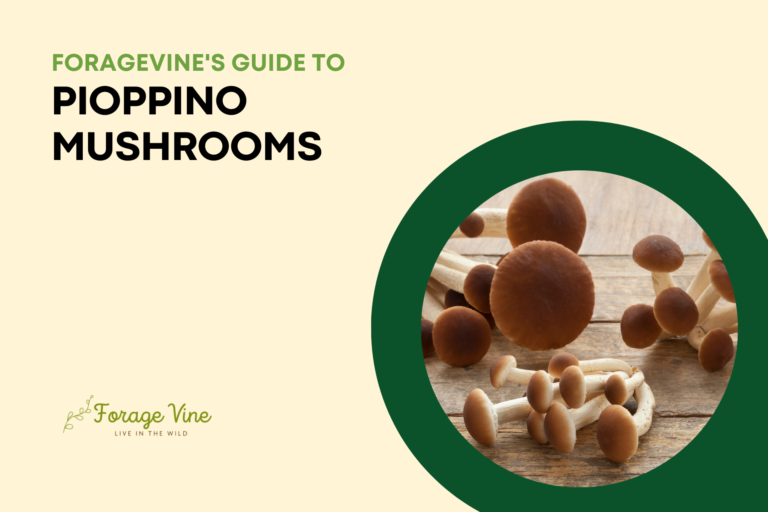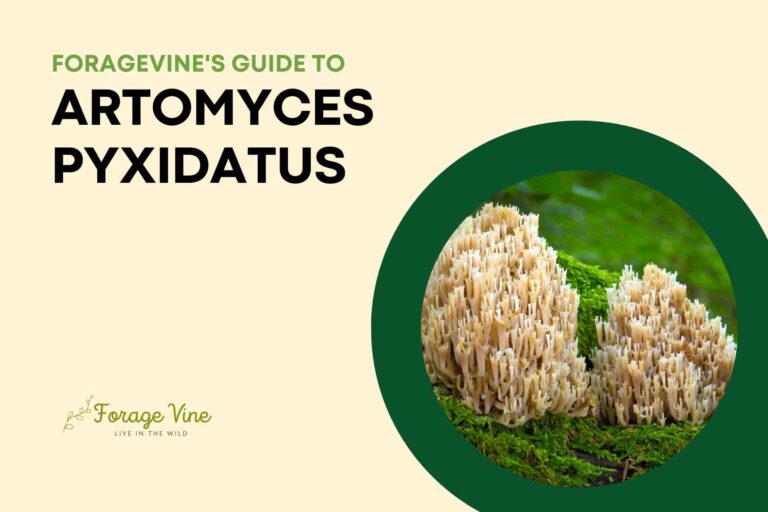Blewit Mushrooms: How to Identify, Grow, Harvest, Store, and Eat them
If you want to learn more about Blewit Mushrooms, this blog post is the perfect place to start! Here we will cover everything you need to know about identifying, growing, harvesting, storing, and eating Blewit mushrooms.
Whether foraging in your park or backyard or trying them out in a delicious recipe, you’ll find tips and techniques that professional chefs use every day. Plus, we discuss why good cultivation practices can make all the difference regarding the safety and taste of these unique fungi.
So whether you are an amateur mushroom hunter or just curious about identifying tasty edible mushrooms, let’s start with our ultimate guide to Blewits!
What are Blewit Mushrooms?
Blewit Mushrooms, otherwise known as Clitocybe nuda, can be found in fields and woodlands around the world. With its distinguishable soft color and bell-shaped cap, it is a good mushroom for beginning pickers to try to identify. In Europe, blewit mushrooms have been part of traditional cuisines for centuries and are enjoyed for their mild nutty flavor. This type of mushroom tends to grow best in cooler temperatures during Autumn and into Winter. But don’t worry if you want to experience these mushrooms but cannot get out into the woods – they can easily be grown indoors with the proper care. So if you’re looking for a delicious new addition to your dinner table or an interesting outdoor activity to add to your weekend routine, check out this Ultimate Guide about Blewit Mushrooms!
What Do Blewit Mushrooms Taste Like?
Their unique combination of flavors and textures makes them an irresistible ingredient. Blewit Mushrooms have an incredibly unique taste that can be hard to describe. It has a delicate, earthy flavor with notes of nuttiness and a mild sweetness. They also have a slight crunch when cooked properly, making them popular amongst mushroom lovers. Blewit Mushrooms will add another dimension to any meal and can be used in all dishes – from omelets to risotto or salads. With this Ultimate Guide, you will learn how to identify them correctly, grow your own at home, and, if they are edible, enjoy the delicious taste of Blewit Mushrooms!
Where Do Blewit Mushrooms Grow?
Blewit Mushrooms are found across many United States and Canadian areas, often on woody or grassy slopes or near streams. There’s plenty of variation among where they can be found depending on location; for example, in northern regions, they can be spotted near coniferous trees at elevations higher than typical for other mushrooms. These fungi also prefer stumps, logs, and decaying leaves to thrive in. If you’re planning a hunt for Blewit Mushrooms, be aware that this species only emerges after periods of heavy rain and warm temperatures – so pick the right time and location to maximize your chances of success! When it comes to Blewit Mushrooms, knowing where they grow is essential to harvesting and identifying them.
How to Identify Blewit Mushrooms
Identifying Blewit mushrooms can be tricky, and it’s important to ensure you are gathering the right mushrooms before consuming them. Blewits have a unique smell and flavor when cut open, distinguishing them from other mushrooms. To tell a Blewit mushroom apart from any other look-alike fungi, begin by looking at its color, which ranges from purplish-gray to light lilac. Then check the white flecks that cover the stems. Also, look for its concave-shaped cap that forms during fruiting and will remain convex even when mature. Lastly, check for its ring on the stem, which is usually located close to the mushroom’s base (or veil). With these tips in mind, it’s possible to identify Blewit mushrooms safely and successfully!
Blewit Mushrooms Look-Alikes
If you’re considering foraging for wild mushrooms, it’s important to be able to differentiate between Blewit Mushrooms and their look-alikes. While Blewits have a pleasant, mild mushroomy flavor and a velvety texture that add depth and complexity to all sorts of dishes, some of their look-alikes can be toxic! To identify Blewit Mushrooms, look for a cap that varies from ivory to lilac in color with concentric bands, gills with a white edge and purplish tinge, and a light brown stem. With the right conditions, they make a delicious addition to any meal. Knowing how to spot the difference is key when enjoying the benefits of fungi farming or harvesting your supply.
How to Grow Blewit Mushrooms
Growing Blewit mushrooms is a fun, easy, and rewarding project. Following a few simple steps and having basic knowledge of mushroom growing, anyone can successfully grow Blewit mushrooms in their own backyard or indoors. The first step is to choose an appropriate spot away from direct sunlight. Then, you will need some mushroom spawn, substrate, and material to cover the bed and hold moisture. Once the bed is ready, add spawn to the substrate before covering it with mesh or cloth for aeration. Finally, all left to do is keep the area moist by regular spraying of water and wait for your homegrown Blewit mushrooms! With this comprehensive guide to help you get started, now’s your chance to become a successful mushroom cultivator.
How to Clean Blewit Mushrooms
While cleaning Blewit Mushrooms is easy, a few key steps will ensure you don’t waste any of their unique flavors. First and foremost, use cold water to keep them fresher for longer. Gently brush away any dirt with a soft-bristled mushroom brush or, if necessary, a damp cloth. But be careful not to oversoak them! Finally, always trim off any discolored areas, as the Blewit Mushroom derives much of its flavor from preserved pigment in different parts of the cap and stem. Following these simple tips, plus all you’ll learn in this guide, should easily have you preparing edible Blewit Mushrooms with ease!
How to Store Blewit Mushrooms
Storing Blewit Mushrooms is relatively simple. Generally, eating them fresh and storing them in the fridge on a plate with a damp paper towel is best. This helps keep the delicate mushrooms from drying out or going bad. Further storage should be done by drying the mushrooms as quickly as possible at room temperature, as this reduces the risk of fungal infection, encourages fast drying, and maximizes preservation. Once they are dry, you may wish to store them in an airtight container in a cool dark place, such as a pantry or cupboard away from direct sunlight and humidity. Alternatively, they can be stored in bulk at 0-5 degrees Celsius, making them suitable for freezing and ensuring they uptake no extra moisture while stored frozen.
How Do You Eat Blewit Mushrooms?
Blewit mushrooms are a unique culinary experience that has been rising in popularity due to their distinctive flavors. While many view them as a gourmet item, they’re surprisingly accessible and easy to cook at home. One of the more popular methods for eating Blewit Mushrooms is sautéing them with butter, garlic, and shallots for an earthy yet flavorful dish. However, you choose to prepare them, be sure to appreciate the wonderful earthy notes that make Blewit Mushrooms a special delicacy. For those looking for something bolder, blewits can be added to soups or sauces for an interesting twist on pasta dishes.
How to Cook Blewit Mushrooms
Blewit mushrooms offer a delicious and uncommon alternative to the typical fungi in stores. With the right preparation, they can provide an exciting new flavor experience. Though looking like clumps of soil, these mushrooms are surprisingly juicy, with a taste, unlike other varieties. To cook them best, start by brushing off any dirt or debris that may be attached. Afterward, you can fry them in butter or olive oil, as both complement their creamy texture nicely. Alternatively, try cooking them in broth with garlic and thyme to make a flavorful soup that captures the unique Blewit Mushroom taste. Whichever way you choose to prepare your mushrooms, doing so correctly ensures their safety and deliciousness.
Health and Nutritional Benefits of Blewit Mushrooms Mushroom
Though not as popular as their more mainstream counterparts, Blewit mushrooms are chock-full of nutritional elements that can do wonders for your health. These common species of wild mushrooms are brimming with minerals such as iron and zinc, nutrients such as Vitamin C and B-complex, and essential amino acids. Furthermore, they possess helpful antioxidants which can maintain a healthy cardiovascular system, reduce inflammation, and prevent the growth of tumors – all while they provide the much-needed change of flavor in your meals. In short, Blewit Mushrooms promote good holistic health!
In conclusion, Blewit Mushrooms are a unique and interesting variety with many health benefits. They can be used for everything from flavourful dishes to medicinal properties. They are also relatively easy to cultivate independently with the right know-how and supplies. If you remember safety when gathering wild mushrooms and following the correct cleaning and storage methods, you should be well on your way to a deliciously healthy dining experience! Identifying and harvesting Blewit Mushrooms can be time-consuming, but luckily with this Ultimate guide in hand, it shouldn’t take long before you reap the rewards of your investments.


